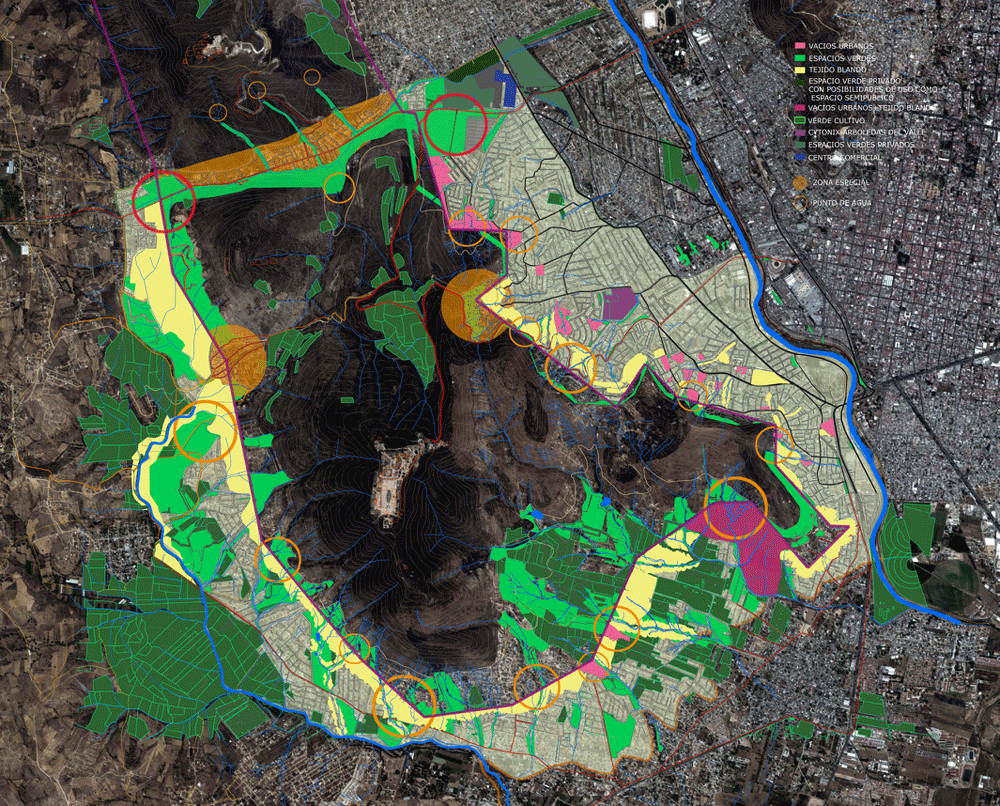Ecological Park Monte Albán
Strategic vision for a metropolitan park, approx. 200 hectaresMonte Albán is one of the first places with a status of “city” in America and the first in Mesoamerica where urbanism was practiced. It is one of the most ancient civilizations in Mesoamerica (more than 1000 years old). The descendants (Zapotecos) still live in the region. Monte Alban has been an UNESCO cultural heritage site since 1987, and is the main attraction of the state, region and city. It is also a source of income.

About this project
Under the theme “Arqueología Viva” (“Living Archaeology”) we defined the strategy to relate Monte Alban archaeological site in a more natural way in its environment. The project’s objectives are: to protect the archaeological site of Monte Alban, improve quality of life of the inhabitants in the immediate surrounding area and organize informal urban growth.
In order to do that, we designed a “circular” park 1600 meters in height, and 200 meters in width, outside the limits of the site’s protected polygon, (established by the National Institute of Anthropology and History (INAH)). The park is maintained by the infrastructure of already existing streams and the hill’s natural landscape.
In the project, urban scales are differentiated in this way: A Guide for Monte Alban and the Atzompa hills, a Strategic Plan for the southern area of Monte Alban, and a Master Plan for the area where the municipal agencies of Montoya, San Martin Mexicapan and San Juan Chapultepec, are located. In this Master Plan many urban projects have been designed to combine public space transformation, increase green areas, efficient use of rain water and improve the quality of life for the inhabitants: urban-hydrological acupunctures. Of the eight acupunctures proposed, two were made in more detail: Ojito de Agua, in Mexicapam and La Crucecita, in the Colonia Santa Anita Parte Alta.
The project as a whole was carried out in a design workshop with the active participation of governmental authorities, non-governmental authorities and citizens. The municipalities, and in particular, communities, now have a general vision of improving their immediate environment, and at the same time receive inspiration to reflect on, define and present new possibilities of urban-hydrological acupunctures. The INAH has a developmental approach that supports their objective of protecting the site.
The project was presented internationally to expert archaeologists at the Historical Heritage Convention in Mexico, 2016, the Water History Convention, 2015, which were organized by the UNESCO IHE, Delft, Holland and the forum “Let’s Talk about Water” in Amsterdam, Holland. In addition, the project was taken up for academic work in an international design workshop in 2016 with the participation of students from the Faculty of Architecture UABJO, Mexico and TU Delft, Holland.










 Final Report
Final Report